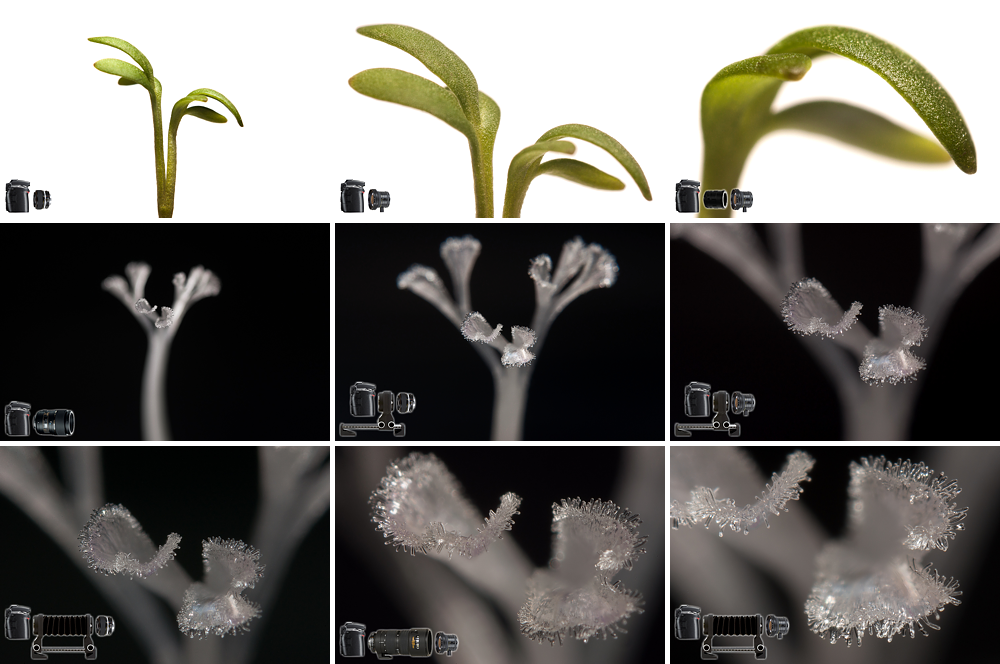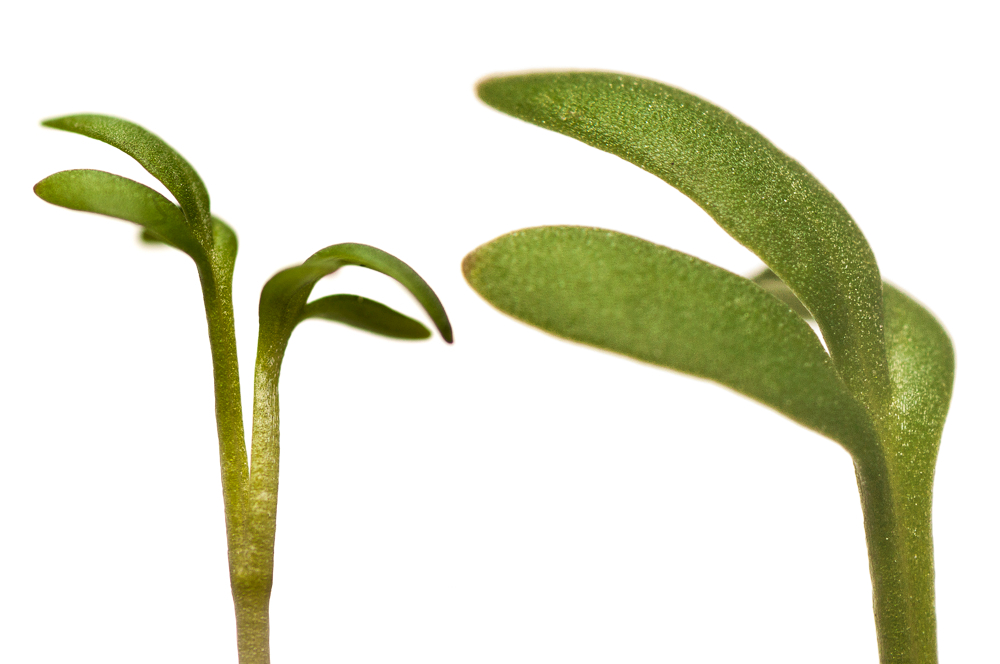- Details
- Category: Gear
Over the previous 4 parts of this article using various techniques we have achieved reproduction ratios ranging from 1:1 to 9:1. These techniques can of course be combined together to achieve an even higher magnification. It's time for a quick summary.

- Details
- Category: Gear
The last technique I'd like to cover requires combining 2 lenses together through a double male thread ring. One lens is mounted normally onto the camera and the other is reverse-mounted onto the first lens. The longer the lens mounted onto the camera the larger magnification can be achieved. Lenses of choice for this article - 50mm f/1.2, 28mm f/3.5 and my 80-200mm f/2.8 set to 200mm. Must be said that it's good if the telephoto lens has a large aperture, otherwise problems with vignetting might occur. Also, throughout the shoot I had the 80-200's focus ring set to infinity and the reverse-mounted lens to the minimum value.

- Details
- Category: Gear
Time to change our subject for part III as the previous one simply doesn't provide enough fine detail for the magnification I'm going for. I decided to go for the stigma of a freesia flower. Overall it's not that much smaller than the cress but it offers a lot more than you are able to see with a naked eye. The bellows attachment I have used is a Nikon PB-5 measuring 190mm when fully extended. That's a lot more than the 65mm of extension tubes used in Part II.

- Details
- Category: Gear
In part I of this short series I explained how to achieve 1:1 magnification with a standard 50mm lens and how to push it to 2:1 with a wide angle prime. In part II I will combine these same lenses with a set of extension tubes to see how that would affect the reproduction ratio. Our subject remains the same for now, soon however I will need to replace it with something with more fine detail as we will be getting really close and personal.

- Details
- Category: Gear
Most dedicated macro lenses offer a reproduction ratio of 1:1, which seems like a lot... until you go out and try to look an ant in the eyes. Then it turns out it's not all that much. In simple terms the 1:1 magnification means an object the size of your camera's sensor will fill the entire frame. I currently own a Nikon D90 so at 1:1 an object measuring ~24x16mm will fill the frame edge to edge. There are several techniques to increase the magnification and while using a dedicated macro lens may be the most hassle-free, you can achieve better results and spend less cash by simply using a standard or wide angle prime lens, even one you may already have lying around in your attic from an old analogue camera.
